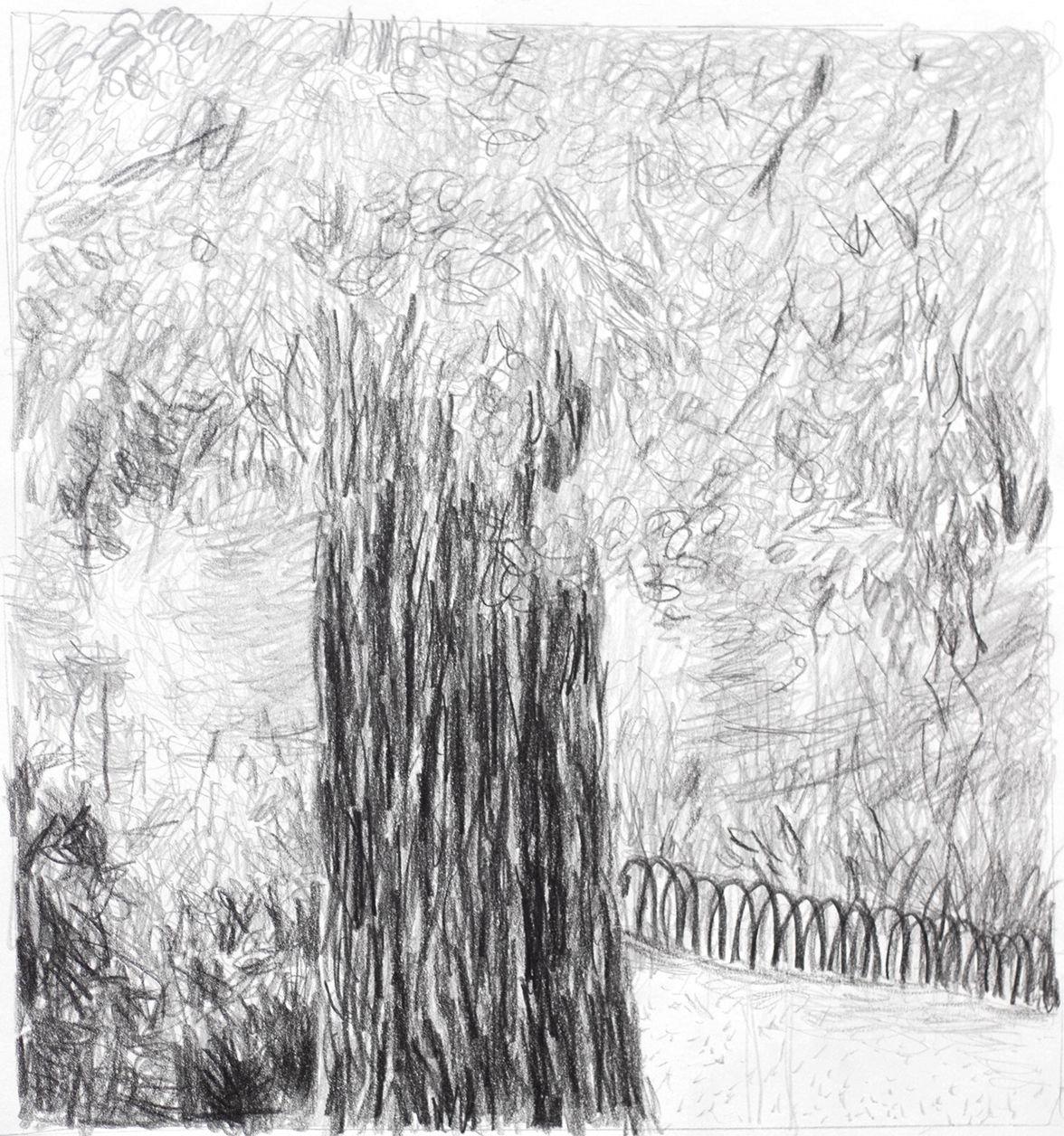Reflection, The Quality of Line and Charcoal Frustration
Standing atop the waterfall installation at the Japanese Garden Island in Regents Park, I watched a squirrel slip past me, grab the coffee cup of my classmate Kevin Atari Abimiku and attempt to drain his morning supply of caffeine. Prior to this vicious attack, I was listening to Kevin explaining some advice he'd acquired from tutor Thomas Newbolt regarding drawing:
He told me that drawing could be approached in two different ways; one being “pictorial” and the other being “descriptive”.
“Descriptive” drawing involves the straightforward capturing of the subject in front of you in a very observational sense. The line and image built is almost completely dictated by what you see in front of you, and what you can physically see with your eyes.
“Pictorial” drawing on the other hand, involves a more subjective curation of the image. This could involve changing elements of the composition to balance certain areas or changing the quality of line to create a more interesting piece of work.
I hope I’ve retained and somewhat understood what he was saying to me, but reflecting back on this now one might simplify it into what you could call a subjective approach to drawing vs. a more objective one. The difficult thing about that simplification is that an objective “truth” is impossible to define in the context of drawing. Remembering Matisse’s quote: “exactitude is not the truth”, as an Artist I realise that any drawing I make involves some form of abstraction regardless of it being “pictorial” or “descriptive”. We then have the choice to either further this abstraction or leave it be to inspire something for another day.
Above was my first drawing of the week; attempting to navigate space with a looser line. At first, the tree in the foreground was actually slightly lighter, but after some advice from tutor Sarah Lee Roberts, I went back into the drawing in the afternoon to give it some more clarity. As for the afternoon … I of course pulled out my gouache.
Gouache Studies in Moleskine Sketchbook
The first two studies I completed were colour studies of the lake attempting to focus on the subtleties of the ever-moving reflection. After finishing a more “descriptive” set of paintings, I moved onto creating my own compositions and colour schemes:
A more subjective approach, Gouache Studies in Moleskine Sketchbook
The piece on the right seems more successful, although if I had some colour references with me (maybe some of Monet’s paintings) I probably could’ve dictated the colour scheme a bit better and given the work more clarity.
His Mouth a Cloud and his Tongue Like Lightning
The following day we were blessed with some fantastic performances by Peter Oswald whose execution of verse was an inspiring start to an ink-filled day. Drawing from the stories that were performed, we used some rather experimental tools (a sock, feather and a chopstick) to splash, scrape and push ink into the surface of our blank sheets and some interesting imagery emerged:
Experimental Ink Drawings, Working from Tales
After experimenting with ink in such a way, I realised how well these drawings could possibly translate into paint. I’m also someone who works quite small a lot of the time but in this session I found myself working on larger sheets of paper which aided the control of the ink. Going forward I should probably bring my own ink to classes and start laying it down with my own sock …
The Ghost Behind the Machine
In Enduring Images this week, tutor Marcus Cornish gave us an excellent insight into the history of space, or lack thereof, in art and we looked at “the ghost in the machine”; thinking about the careful construction of composition, and in some cases how certain works can be simplified into certain shapes and connected lines.
I’ll be honest and say despite the interesting context, drawing was rather challenging for me. For the morning and beginning of the afternoon, we worked with a sequence of poses attempting to relate it all in a single, flowing, connected composition. I think part of my frustration was the use of charcoal we were encouraged to use, as the medium is just so difficult for me to control and I find my drawings lacking clarity when I use it.
My Struggle with Charcoal
Above is the most successful drawing I did from the sequences; a rather soft, loose build up of rubbings into a charcoal ground. For the remainder of the afternoon, we moved onto looking at the quality of line and how it might communicate different emotions through figurative work.
Softer line vs. More agitated
Above you can see two different approaches to line: the drawing on the left leaving a softer, tender look and the drawing on the right angry and agitated. The “character” of a line is certainly something to think about when drawing, I think going forward I’ll try and think more about my subject and how my marks might communicate how I feel about what I’m observing.
The Circle of Life
This week in the British museum, I found myself drawing from the South Asian section with tutor Lindsay Sekulowicz. We were encouraged to think about the circle, and what that might mean metaphorically in the works we were looking at. Once again, I found myself finding it difficult to get into the flow of drawing, so I focused on a detailed stone carving to get myself into gear:
After completing a drawing that felt rather solid and rigid, I felt it was time to loosen up and chose to study the robes of some statues I probably should’ve recorded the names of:










